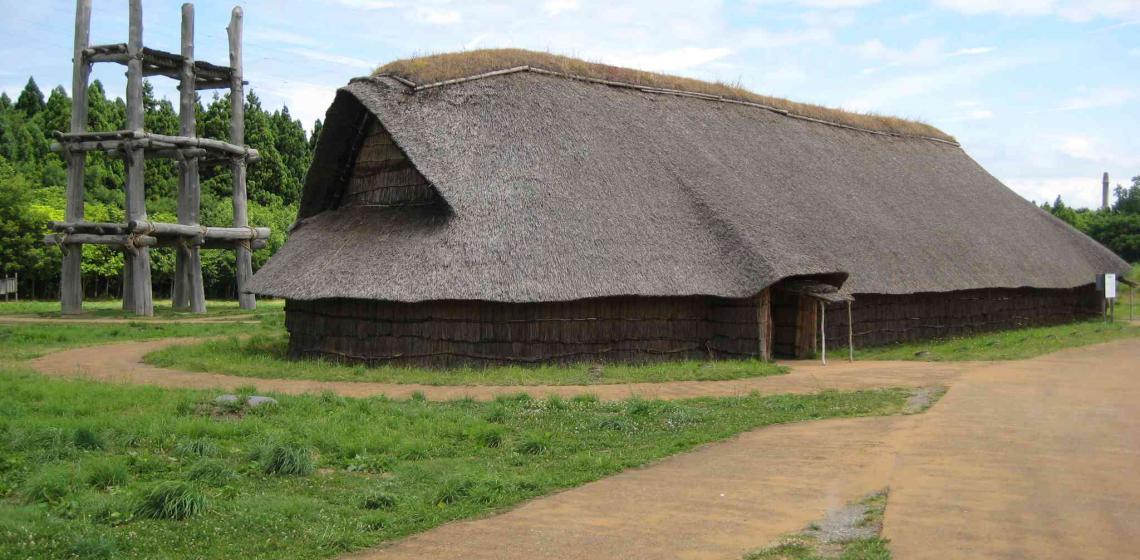Sannai-Maruyama (JP)

The Sannai-Maruyama special historical site ((三内丸山遺跡)) features the remains of a large, long-term settlement that from the Early to the Middle Jomon period (from approximately 5,500 to 4,000 years ago).
Excavation that started in 1992, and pit-dwellings, large pit-dwellings, burial pits for adults, burial jars for children, mounds, the remains of large and regular-sized pillar-supported building, storage pits, clay mining pits, and remains of roads have been found. These findings have revealed how people lived in this settlement, as well as the natural environment at that time. Other excavated items include a large number of pottery, stone artifacts, clay figures, earthenware, stoneware, woodenware such as digging sticks, lacquerware, bone tools, woven baskets called “Jomon pochettes” and woven clothes from the Jomon period. The excavation has also revealed that jade and obsidian had been brought in from far off regions. The site was designated as a special historical site by the Japanese government in November 2000.
Pillar-supported buildings were built by erecting pillars in holes to support floors and the roof. At this site, we have found two lines of 3-pillar holes with a diameter and depth of approximately 2 meters. The holes were neatly arranged at intervals of approximately 4.2 meters. From these holes, protrude wooden columns made of chestnut with a diameter of approximately 1 meter. These columns are believed to be from the end of the middle of the Jomon period (approximately 4,000 years ago). This large pillar-supported buildings was reconstructed to dimensions estimated as a result of excavation research and analysis of the pressure on the soil at the bottom of the pillar holes. It was reconstructed as a 3-story building with 4.2-meter wide floors that fit the distance between the pillars. The roof has not been reconstructed since there are several possible theories as to its form.
Pit-dwellings were constructed with pillars, a roof, and a floor created by removing soil. The site exhibits pit-dwellings that were built in the middle of the Jomon period (approximately 4,500 years ago). Three types of roofs—thatched, bark, and mud roofs—have been Reconstructed in the dwellings in accordance with the excavation research results and tribal data. Approximately 700 dwellings have so far been discovered, and they have a different floor shape, pillar arrangement, and furnace structure and location depending on when they were built.
A pit-dwelling longer than 10 meters in length is called large pit-dwellings. A number of large pit-dwellings have been found around the center of the settlement. This area shows how a large pit-dwelling built in the Early Jomon period (approximately 5,000 years ago) was excavated. It is an approximately 18-meter long structure. The existence of pillar marks on the outside of the structure suggests that the house may have been rebuilt. A pit-dwelling longer than 10 meters in length is called large pit-dwelling. This restored model is the largest in Japan; it is approximately 32 meters long and 9.8 meters wide, resulting in a floor area of approximately 250 m2. This site displays a large pit-dwelling built at the end of the Middle Jomon period (approximately 4,000 years ago). It has been theorized that this structure served as a gathering space or as communal workshop.
Text source: sannaimaruyama.pref.aomori.jp
